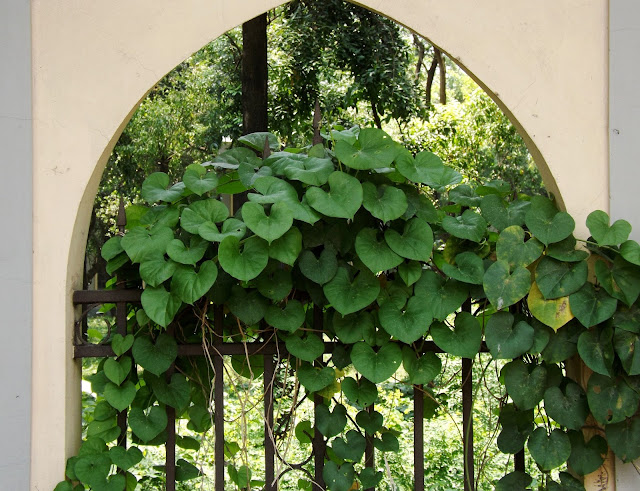Orboroi or Star gooseberry, Phyllanthus acidus
Orboroi or Star gooseberry (Phyllanthus acidus, family: Euphorbiaceae) is a small-sized decidous tree with soft branches, attaining a height of 8-10 m. Bark is rough and greu in color. It is found everywhere in Bangladesh as a homestead tree. Its sour fruit is quite popular to children and women. Madagascar and Malaysia are considered to be the original home of the plant.
Other names: Horboroi, Aalboroi, Noil, Noyel, Royel, Nolta, Leboir, Forfori, (Bang); Malay gooseberry (Eng).
Leaves are pinnate, 35-40 cm long, 16-30 leaves in a pinnae. Leaflets are light green, oval-shaped, 7-9 cm long and 3-4 cm wide, alternate.
The flowers are tiny, clustered on spikes, reddish, grow abundantly on branches. Female and male flowers appear separately on the same branch. Flowering occurs at the beginning of spring.
Fruits are edible, round, 1-2 cm wide, somewhat quadrangular, green in color, juicy, light yellow when ripe, 1-seeded. It looks a lot like Amloki, a member of its family. The fruits are found in the market during the rainy season.
Fruit is used in cooking. It is also used to make pickle and jelly. Its bark, root, fruit and flower have medicinal value. It contains of vitamin B & C, calcium and minerals. Seeds are used to relieve cough and cold. It is also believed to work against measles and chicken pox. The plant is mentioned in Ayurvedic scriptures. The first part of the scientific name Phyllanthus (leaf flower) refers to the abundance of blooming among the leaves. And the last part Acidus is derived from its sour-tasted fruits.
Synonyms: Averrhoa acida, Cicca acida, Cicca acidissima, Cicca disticha, Cicca nodiflora, Cicca racemosa, Diasperus acidissimus, Phyllanthus acidissimus, Phyllanthus cicca, Phyllanthus cochinchinensis, Phyllanthus distichus, Phyllanthus distichus, Phyllanthus longifolius, Tricarium cochinchinense.






Comments
Post a Comment